Safety Instrumented System Market Size
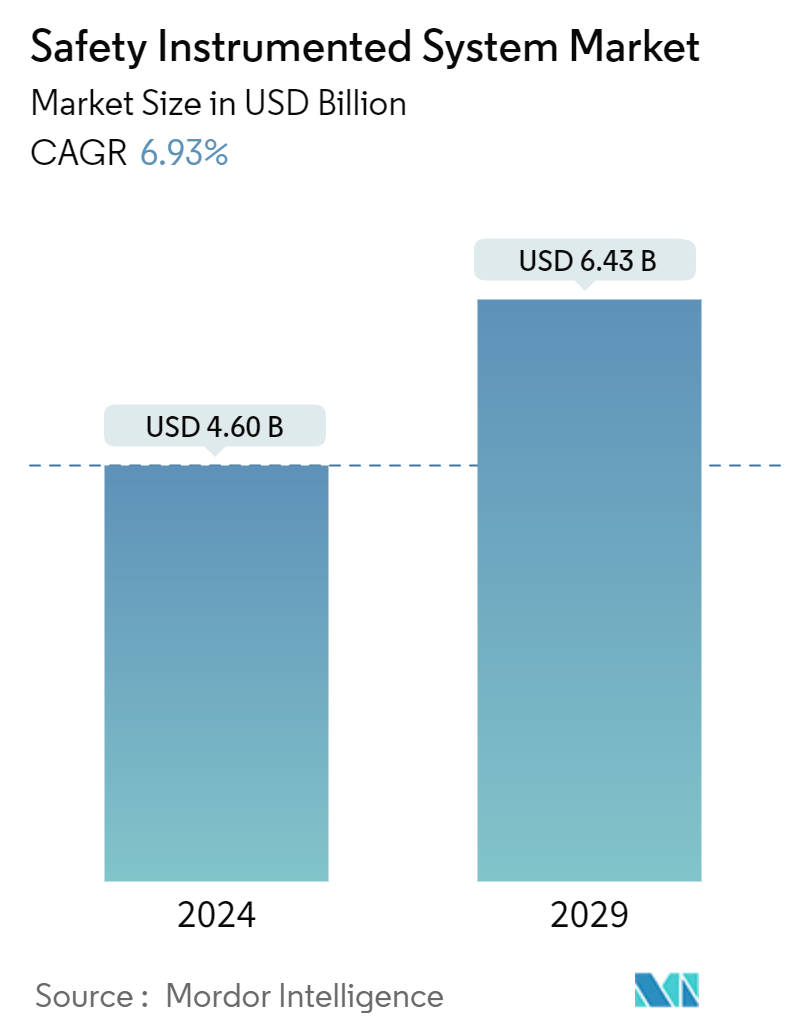
| Study Period | 2019 - 2029 |
| Market Size (2024) | USD 4.60 Billion |
| Market Size (2029) | USD 6.43 Billion |
| CAGR (2024 - 2029) | 6.93 % |
| Fastest Growing Market | Asia-Pacific |
| Largest Market | North America |
Major Players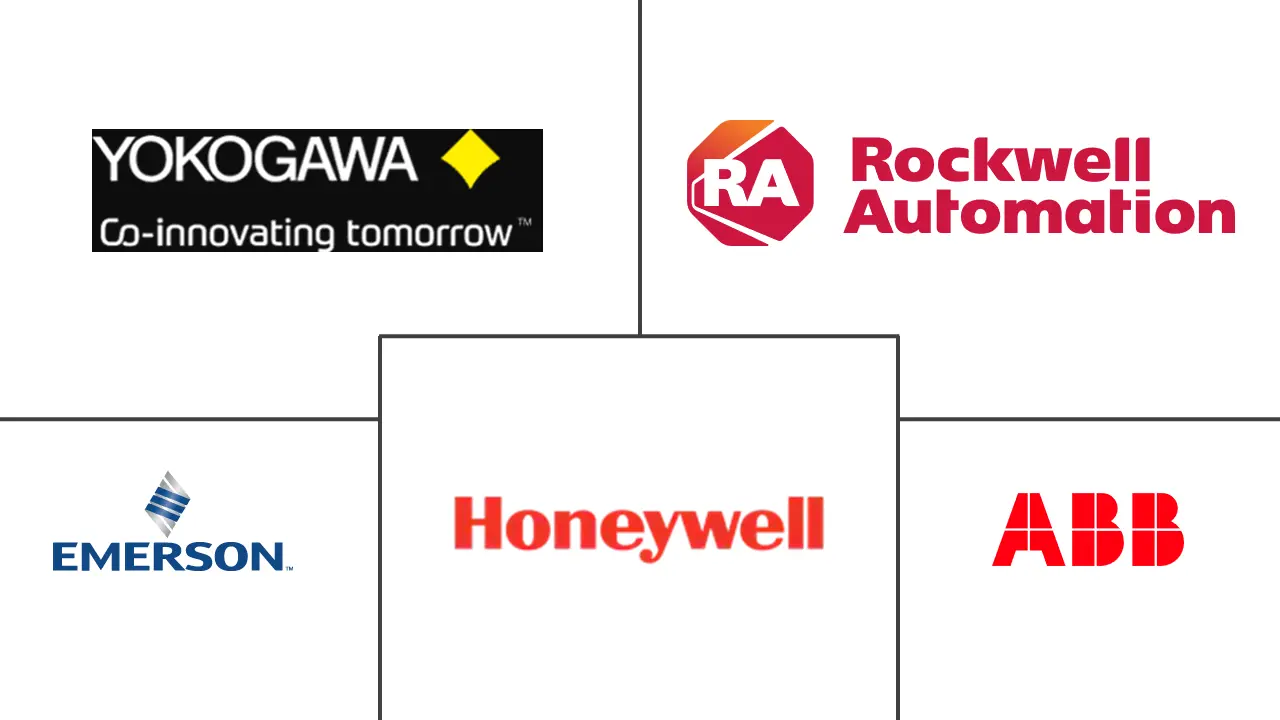
*Disclaimer: Major Players sorted in no particular order |
Safety Instrumented System Market Analysis
The Safety Instrumented System Market size is estimated at USD 4.60 billion in 2024, and is expected to reach USD 6.43 billion by 2029, growing at a CAGR of 6.93% during the forecast period (2024-2029).
The widespread adoption of safety regulations and standards, coupled with increased awareness about the need for industrial safety management and competency at individual and organizational levels, has led to the rapid adoption of safety switches in manufacturing units to prevent accidents.
- In August 2023, five laborers died after inhaling a suspected poisonous gas that emanated from a tank at a food product factory in Madhya Pradesh. It was due to a lack of negligence in taking safety measures at the factory. Also, 18 workers were hospitalized after inhaling a toxic gas that leaked from a tank in a chemical factory in Gujarat, India. Such an alarming situation has emphasized the need for various end-user industries in the country to adopt high-integrity pressure protection systems.
- The industrial processes across chemicals and petrochemicals, power generation, pharmaceuticals, food and beverage, oil and gas, and other end users are closely regulated by various governing bodies to prevent sudden breakdowns and mishaps. The regulatory environment has tightened to encourage the deployment of SIS as a precautionary measure. The widespread adoption of safety regulations and standards, coupled with increased awareness about the need for industrial safety management and competency at both individual and organizational levels, has led to the rapid adoption of safety switches in manufacturing units to prevent any accidents.
- The deployment of the SIS in the oil and gas industry is driven by the strict laws and acts that are formulated to restrict catastrophic spillage and avoid environmental pollution.
- For instance, the US Oil Pollution Act, alongside Oil Spills Prevention and Preparedness Regulations, is placed to prevent such accidents. Several compliance programs, such as the On-Site Civil Inspection Procedures Rule, as contemplated by section 7 of EO 13892, ensure that reasonable administrative inspections check whether the facilities comply with environmental laws. The growing regulatory environment in various industries contributes to market growth.
- Since the onset of the Israeli-Hamas crisis, oil prices have surged by approximately 6%, with expectations of further increases. Global economists are formulating strategies to address the inflationary impact resulting from the ongoing war, which has already left a lasting mark on the global economy, causing continuous disruptions. Analysts are closely scrutinizing the trajectory of the Middle East crisis, drawing comparisons with past conflicts in the region to assess potential economic repercussions.
- According to the World Bank, an escalation in the conflict between Israel and the Palestinian militant group could trigger a significant energy shock, marking the first such occurrence in decades. These consequences stem from the aftermath of Russia's recent war with Ukraine and the persisting Middle East crisis, raising concerns of a recurrence of the oil price crisis seen in the 1970s. Consequently, the crisis is anticipated to significantly impact the Safety Instrumented Systems (SIS) sector, given that the oil and gas industry ranks among the largest end-users of SIS.
- The war is also poised to lead to higher food and energy prices, potentially intensifying economic consequences and causing a dual shock in global commodity markets. The resulting surge in oil and gas prices would have a cascading effect, elevating costs in the shipping and fertilizer sectors. This, in turn, could translate into increased prices for agricultural commodities, further influencing the growth of Safety Instrumented Systems (SIS).
Safety Instrumented System Market Trends
Chemical and Petrochemical Industry is Expected to Hold a Major Market Share
- A safety instrumented system encompasses sensors, logic solvers, and final control elements to keep the process safe when predetermined conditions are violated. The growing benefits of safety instrumented systems over traditional ones fuel the market demand. The chemicals and petrochemicals industries are identified as continuously developing industries where the need to expand and upgrade aging safety problems and infrastructures is essential.
- For instance, according to Brand Finance, in 2023, the world's chemical industry had a brand value of nearly USD 62 billion. This represents an increase of over USD 36 billion in 2015 when comparing the global chemical industry's brand value. Traditional safety systems are deployed through an electrical control system and are hardwired, leading to potential accidents affecting people, assets, and the environment.
- This is expected to increase the demand for safety-instrumented systems in petrochemical industries that deliver several advantages, such as prolonged field life, reduction in unplanned downtime, reduction in annual maintenance cost, elimination of unexpected repair expenses, and adherence to current codes and standards. Thus, the increasing advantages of safety instrumented systems over traditional safety systems are expected to drive industry growth.
- Chemical industries have hazardous environments due to gas, oil, or dust, creating an explosive atmosphere in and around the machines. Moreover, the industry issues related to regulation, geopolitical risk, legal limits on using natural resources, shareholder activism, and increasing public scrutiny have created additional challenges. Thus, safety equipment such as fire and gas monitoring and detection, SCADA, and HIPPS installation is paramount.
- Further, many companies offer controllers for emergency and safety shutdown duties and handle complex equipment maintenance in the petrochemical plant. For instance, HIMA, an intelligent safety company, offers controllers that perform classic emergency shutdown duties and handle complex equipment functions. The SafeEthernet protocol ensures safe cross-communication between controllers at safety integrity level 3 (SIL 3). It also offers fast response times in a safety shutdown, and the high operational safety (SIL 3) within safety-critical production processes contributes to the acetylene plant's high availability and productivity.
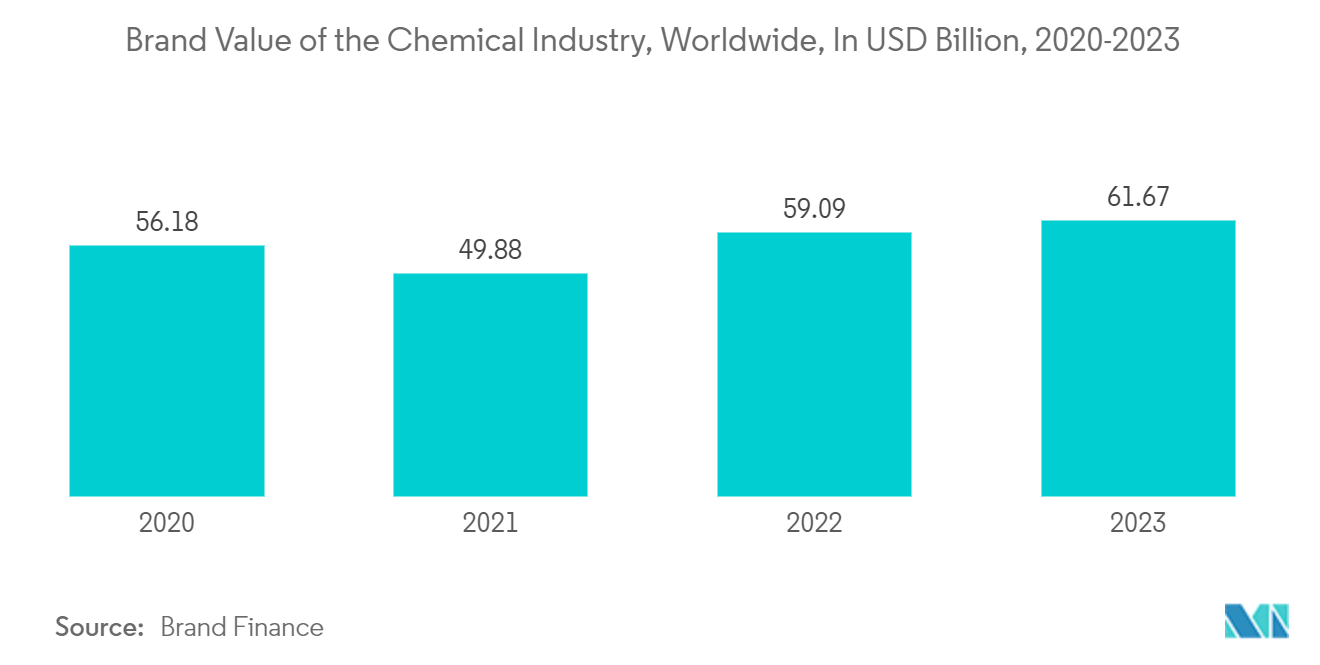
Asia-Pacific is Expected to Witness High Growth Rate
- In many industrial processes and automation systems, safety instrumented systems play an important role in delivering protective layer functions. The term "safety system engineering" refers to a disciplined and methodical approach to hazard identification, safety requirement specifications, and system maintenance and operation throughout the life of a plant. The rise of the petrochemical and energy sectors is critical to the growth of the safety instrumented system industry.
- Furthermore, as the process sector advances toward embracing greater safety standards, control systems that can manage changes, such as steam turbines, compressors, and variable speed drives, may become necessary to maintain profitability while meeting agile needs.
- Because of stagnating industrial growth in industrialized countries, demand for valves and actuators has slowed. The government's increasing support for new industries, as well as political conditions, make the country conducive to industrial expansion. As a result, foreign corporations are looking to invest in this industry. In addition, there are ongoing and planned initiatives for establishing water and wastewater treatment plants in the region.
- For example, the Cambodian government and the Japanese International Cooperation Agency struck an agreement to construct a wastewater treatment plant in the Dangkor area. With a USD 25 million investment, the project aims to improve the drainage infrastructure in the district so that wastewater can flow directly to the plant rather than into the river. Such projects are expected to fuel the safety instrumentation systems market in Asia-Pacific.
- The food and beverage sector has a moral and legal responsibility to protect its employees. Heavy machinery, hazardous chemicals, and slick surfaces are among the immediate concerns, while dust inhalation, hearing loss, and repetitive strain injuries are among the more gradual threats. Coca-Cola, the world's largest beverage company, has noticed a surge in demand for sugar-free and low-sugar beverages in Southeast Asia. After the COVID-19 pandemic, this became more prominent.
- Due to rapidly increasing industrial activities, rising cost pressures and production rates, and favorable government policies in developing countries like China and India, Asia-Pacific is predicted to witness the fastest growth rate. Manufacturers have responded by developing new goods for specific uses in response to changing demands based on usage.
- Furthermore, an increase in the number of safety instrumented systems has resulted in the creation of more complex systems. Furthermore, the use of these systems has increased in the oil and gas, chemicals, and power industries because they help monitor usage hours, different aspects of boiler management, stack temperature, boiler, and fuel efficiency, all of which are important in this business.
- Moreover, at the 2020 National People's Congress, the CCP announced that in addition to doubling down on its Made in China 2025 and China Standards 2035 initiatives, it might spend approximately USD 1.4 trillion on a digital infrastructure public spending program. China's New Infrastructure initiative presents exciting opportunities for global companies. Owing to the same, the number of SIS equipment adopters in different sectors, such as new energy vehicles, oil and gas, 5G equipment, logistics, and energy and power, is expected to grow, boosting the growth of the market in the region.
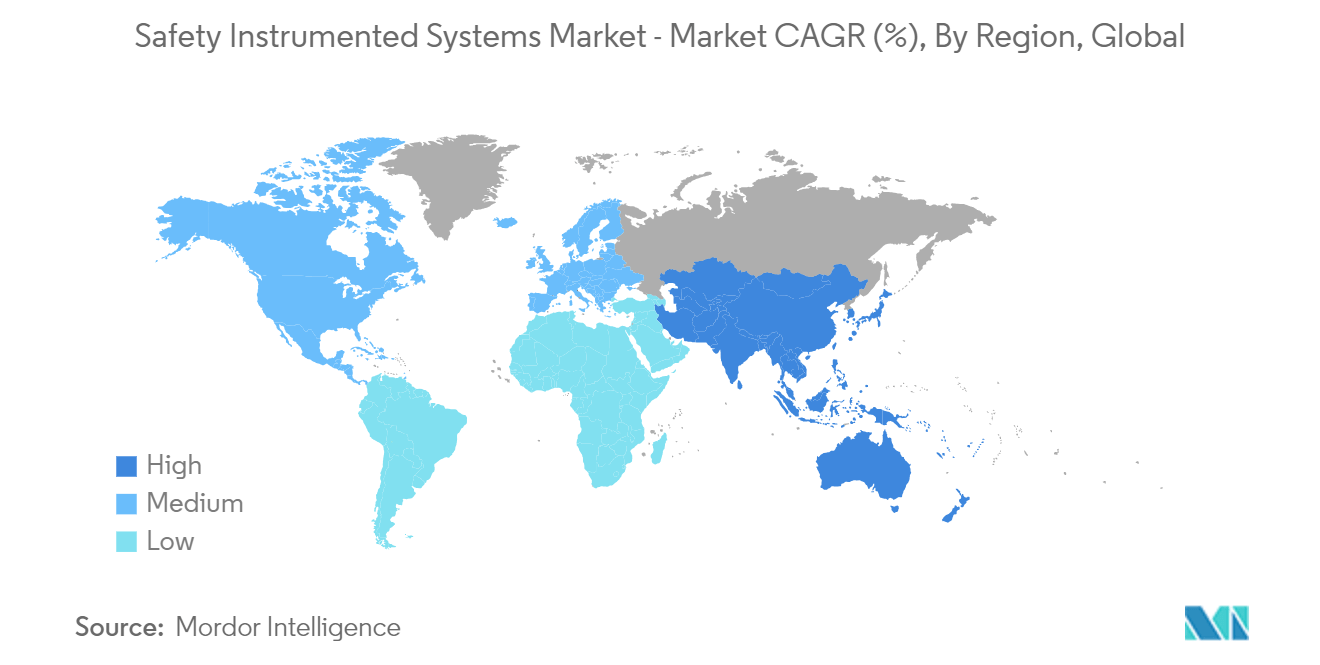
Safety Instrumented System Industry Overview
The safety instrumented systems market is semi-consolidated with several significant players like Siemens AG, ABB Ltd, and Schneider Electric SE. With a prominent share in the market, these major players are focusing on expanding their customer base across foreign countries. These companies leverage strategic collaborative initiatives to increase their market share and profitability. Competition, rapid technological advancements, and frequent changes in consumer preferences are expected to threaten the market's growth during the forecast period.
- October 2023: Honeywell launched lithium-ion (Li-ion) battery safety sensors designed to play a pivotal role in identifying potential battery fires in electric vehicles (EVs). Complementing this, Honeywell offers a range of personal protective equipment (PPE) and gas detection solutions to enhance worker safety in EV plants. The integration of Honeywell battery safety sensors into EV and scooter battery packs enables the early detection of thermal runaway risks, providing timely warnings to passengers and assisting manufacturers in meeting global battery fire safety standards.
- August 2023: Yokogawa Electric Corporation unveiled plans to launch an upgraded version of the Collaborative Information Server (CI Server), a key component within the OpreX Control and Safety System suite. This upgrade boasts enhanced alarm management, improved accessibility to maintenance information, and extended support for global communication standards. The solution aims to aggregate substantial data from diverse plant equipment and systems, facilitating the streamlined management of production activities throughout the enterprise. It establishes an environment conducive to remote monitoring, control operations from any location, and prompt decision-making.
Safety Instrumented System Market Leaders
-
Rockwell Automation Inc.
-
Emerson Electric Company
-
Honeywell International Inc.
-
Yokogawa Electric Corporation
-
ABB Ltd
*Disclaimer: Major Players sorted in no particular order
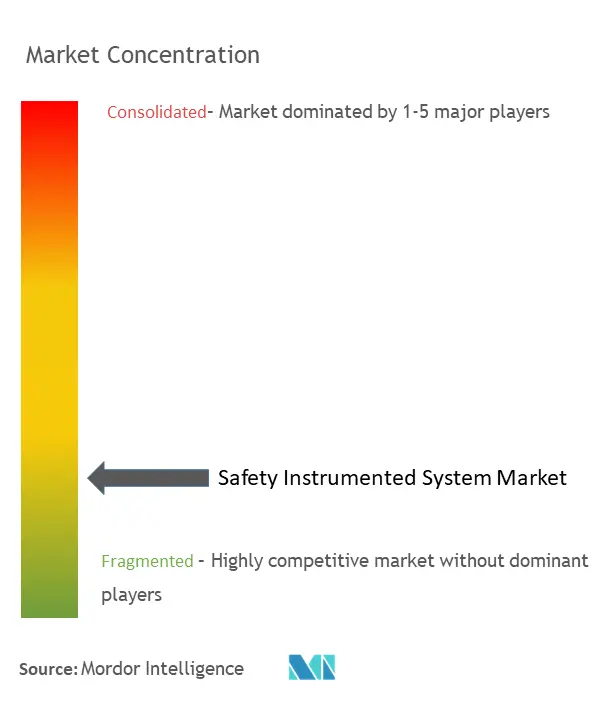
Safety Instrumented System Market News
- November 2023: HIMA unveiled the latest iteration, version 14.0.0, of SILworX. This release positions the engineering, diagnostics, and test tools as a central hub for the digitization of data sourced from safety devices. HIMA is advancing its digitalization efforts with this version, taking a significant stride to streamline processes by integrating consistent digitalization and introducing new functionalities. The objective is to simplify tasks while maintaining flexibility and effectively leveraging modern Industry 4.0 functions.
- May 2023: BENY introduced its Rapid Shutdown Solution, the BFS-21/22, designed to enhance safety for users of photovoltaic systems. Engineered to maximize safety by swiftly and precisely disconnecting solar PV systems during emergencies, the BFS-21/22 Component-Level Rapid Shutdown Device utilizes advanced PLC communication technology for rapid switching. With a focus on unwavering reliability, low power consumption, and cost-effectiveness, this product ensures the secure operation of photovoltaic systems, minimizing potential risks and contributing to overall safety measures.
Safety Instrumented System Market Report - Table of Contents
1. INTRODUCTION
- 1.1 Study Assumption and Market Definition
- 1.2 Scope of the Study
2. RESEARCH METHODOLOGY
3. EXECUTIVE SUMMARY
4. MARKET INSIGHTS
-
4.1 Market Overview
- 4.1.1 Threat of New Entrants
- 4.1.2 Bargaining Power of Buyers
- 4.1.3 Bargaining Power of Suppliers
- 4.1.4 Threat of Substitute Products
- 4.1.5 Intensity of Competitive Rivalry
- 4.2 Impact of Macro Trends on the Market
5. MARKET DYNAMICS
-
5.1 Market Drivers
- 5.1.1 Growing Regulatory Environment in the Industry
- 5.1.2 Presence of Robust SIS Service Ecosystem
-
5.2 Market Restraints
- 5.2.1 Operational Complexity Coupled with High Maintenance Costs
6. Market SEGMENTATION
-
6.1 By Application
- 6.1.1 Emergency Shutdown Systems (ESD)
- 6.1.2 Fire and Gas Monitoring and Control (F&GC)
- 6.1.3 High Integrity Pressure Protection Systems (HIPPS)
- 6.1.4 Burner Management Systems (BMS)
- 6.1.5 Turbo Machinery Control
- 6.1.6 Other Applications
-
6.2 By End User
- 6.2.1 Chemicals and Petrochemicals
- 6.2.2 Power Generation
- 6.2.3 Pharmaceutical
- 6.2.4 Food and Beverage
- 6.2.5 Oil and Gas
- 6.2.6 Other End Users
-
6.3 By Geography
- 6.3.1 North America
- 6.3.2 Europe
- 6.3.3 Asia
- 6.3.4 Australia and New Zealand
- 6.3.5 Latin America
- 6.3.6 Middle East
- 6.3.7 Africa
7. COMPETITIVE LANDSCAPE
-
7.1 Company Profiles*
- 7.1.1 Rockwell Automation Inc.
- 7.1.2 Emerson Electric Company
- 7.1.3 Honeywell International Inc.
- 7.1.4 Yokogawa Electric Corporation
- 7.1.5 ABB Ltd
- 7.1.6 Schneider Electric SE
- 7.1.7 Siemens AG
- 7.1.8 HIMA Paul Hildebrandt GmbH
- 7.1.9 SIS-TECH Solutions LP
- 7.1.10 Schlumberger Limited
8. INVESTMENT ANALYSIS
9. FUTURE OF THE MARKET
** Subject To AvailablitySafety Instrumented System Industry Segmentation
Safety instrumented systems (SIS) are being implemented across industries to complement their process control systems to reduce the risk of accidents on the industry floor and in the operation process. There are many ways in which safety instrumentation is being deployed. Compliance with international standards, such as IEC 61508 and IEC 61511, which indicate an acceptable quality in the design and management of safety controls across industries, drives the implementation of SIS.
The safety instrumented systems market is segmented by application (emergency shutdown systems [ESD], fire and gas monitoring and control [F&GC], high integrity pressure protection systems [HIPPS], burner management systems [BMS], turbo machinery control, and other applications), end user (chemicals and petrochemicals, power generation, pharmaceutical, food and beverage, oil and gas, and other end users), and geography (North America, Europe, Asia-Pacific, Latin America, and Middle East and Africa). The report offers market forecasts and size in value (USD) for all the above segments.
| By Application | Emergency Shutdown Systems (ESD) |
| Fire and Gas Monitoring and Control (F&GC) | |
| High Integrity Pressure Protection Systems (HIPPS) | |
| Burner Management Systems (BMS) | |
| Turbo Machinery Control | |
| Other Applications | |
| By End User | Chemicals and Petrochemicals |
| Power Generation | |
| Pharmaceutical | |
| Food and Beverage | |
| Oil and Gas | |
| Other End Users | |
| By Geography | North America |
| Europe | |
| Asia | |
| Australia and New Zealand | |
| Latin America | |
| Middle East | |
| Africa |
Safety Instrumented System Market Research FAQs
How big is the Safety Instrumented System Market?
The Safety Instrumented System Market size is expected to reach USD 4.60 billion in 2024 and grow at a CAGR of 6.93% to reach USD 6.43 billion by 2029.
What is the current Safety Instrumented System Market size?
In 2024, the Safety Instrumented System Market size is expected to reach USD 4.60 billion.
Who are the key players in Safety Instrumented System Market?
Rockwell Automation Inc., Emerson Electric Company, Honeywell International Inc., Yokogawa Electric Corporation and ABB Ltd are the major companies operating in the Safety Instrumented System Market.
Which is the fastest growing region in Safety Instrumented System Market?
Asia-Pacific is estimated to grow at the highest CAGR over the forecast period (2024-2029).
Which region has the biggest share in Safety Instrumented System Market?
In 2024, the North America accounts for the largest market share in Safety Instrumented System Market.
What years does this Safety Instrumented System Market cover, and what was the market size in 2023?
In 2023, the Safety Instrumented System Market size was estimated at USD 4.28 billion. The report covers the Safety Instrumented System Market historical market size for years: 2019, 2020, 2021, 2022 and 2023. The report also forecasts the Safety Instrumented System Market size for years: 2024, 2025, 2026, 2027, 2028 and 2029.
Safety Instrumented System Industry Report
The report provides an extensive industry analysis of the Industrial Safety Systems market, segmented by various applications such as Emergency Shutdown Systems, Fire and Gas Monitoring and Control, High Integrity Pressure Protection Systems, Burner Management Systems, Turbo Machinery Control, and other applications. It also covers different end users including Chemicals and Petrochemicals, Power Generation, Pharmaceutical, Food and Beverage, Oil and Gas, and other end users. The report includes a historical overview and a market forecast outlook, providing valuable industry information on the market growth and market trends.
The industry reports highlight the market segmentation and market value across different geographies such as North America, Europe, Asia-Pacific, Latin America, and the Middle-East and Africa. The report offers a comprehensive market overview and market review, detailing the market leaders and market outlook. It includes industry statistics and industry trends, providing insights into the industry size and industry sales.
The report example and report PDF download offer a detailed market analysis and market predictions, showcasing the market data and market forecast for the Safety Instrumented System market. The industry research includes a market growth rate analysis, emphasizing the market growth and market leaders in the industry. The report also covers industry outlook and industry research, providing a thorough understanding of the market dynamics.
Overall, this industry report serves as a crucial resource for research companies and stakeholders, offering a detailed market review and market segmentation analysis. The report's industry statistics and market data provide an in-depth understanding of the market trends and market value, making it an essential tool for industry professionals.



